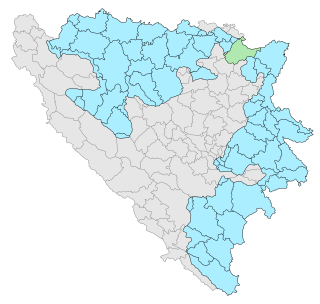| Gornja Lipovača | |
|---|---|
| Village | |
| Coordinates: 45°07′N17°14′E / 45.117°N 17.233°E | |
| Country | Bosnia and Herzegovina |
| Entity | Republika Srpska |
| Municipality | Gradiška |
| Time zone | CET (UTC+1) |
| • Summer (DST) | CEST (UTC+2) |
Gornja Lipovača (Cyrillic: Горња Липовача) is a village in the municipality of Gradiška, Republika Srpska, Bosnia and Herzegovina. [1]

A village is a clustered human settlement or community, larger than a hamlet but smaller than a town, with a population ranging from a few hundred to a few thousand. Though villages are often located in rural areas, the term urban village is also applied to certain urban neighborhoods. Villages are normally permanent, with fixed dwellings; however, transient villages can occur. Further, the dwellings of a village are fairly close to one another, not scattered broadly over the landscape, as a dispersed settlement.

Under the "Law on Territorial Organization and Local Self-Government" adopted in 1994, Republika Srpska was divided into 80 municipalities. After the conclusion of the Dayton Peace Agreement, the law was amended in 1996 to reflect the changes to the entity's borders and now provides for the division of Republika Srpska into 64 municipalities.

Gradiška is a city and municipality located in northwestern Republika Srpska, an entity of Bosnia and Herzegovina. As of 2013, it has a population of 51,727 inhabitants.





